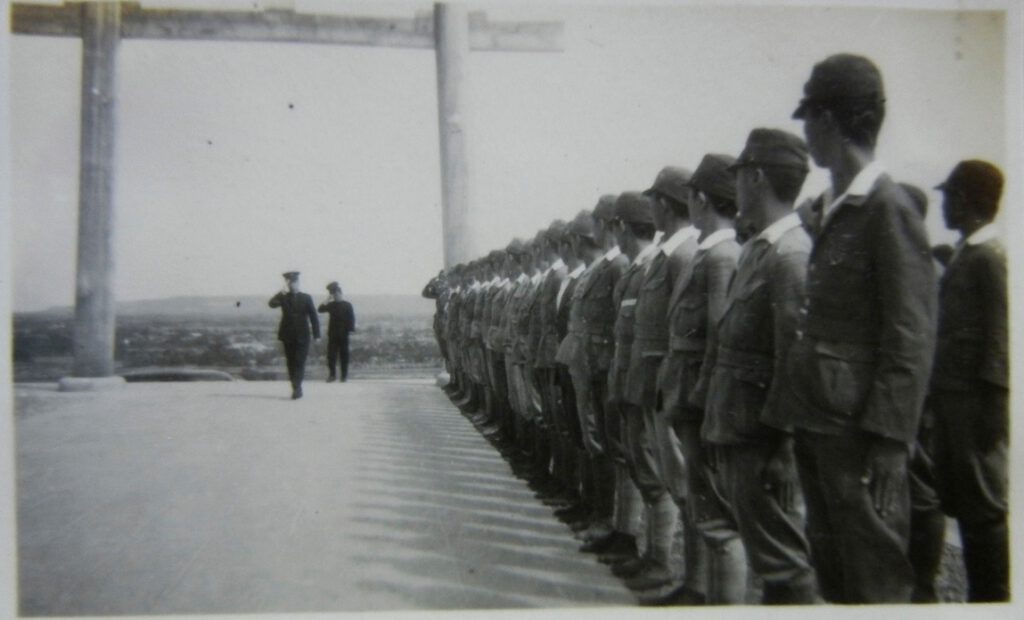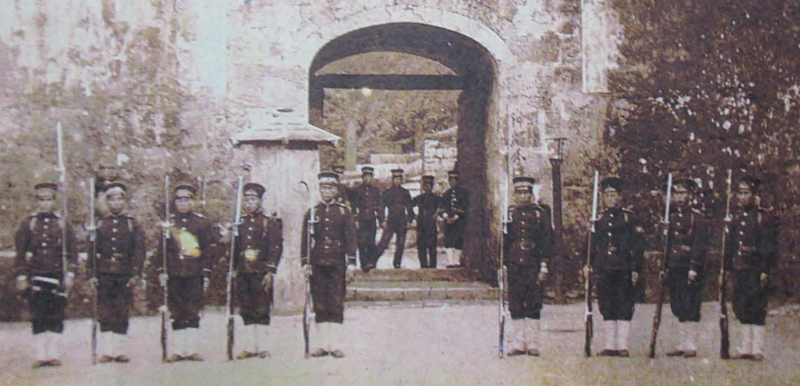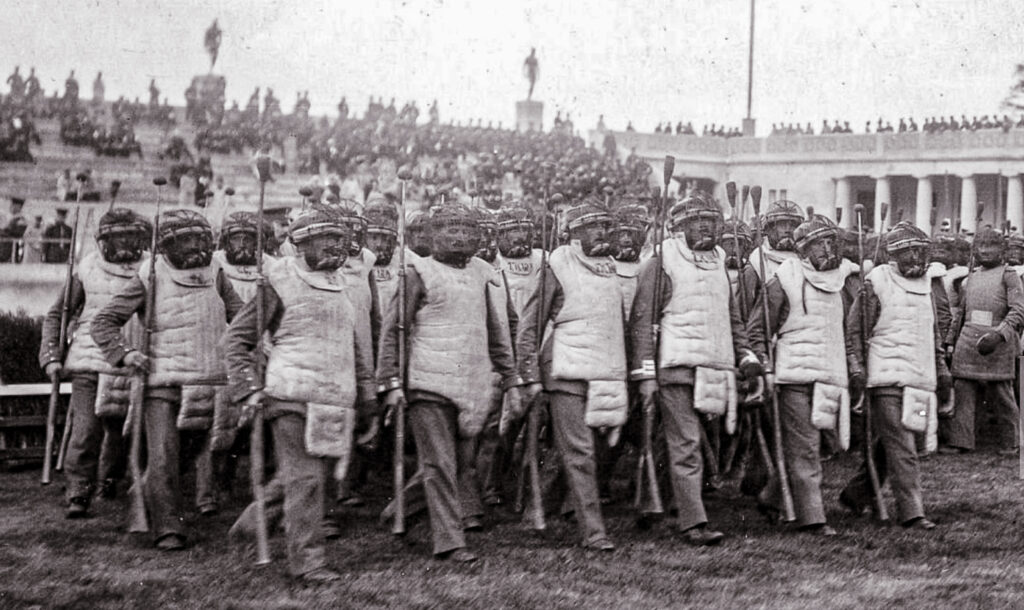In 1938, a physical strength department was newly established in the Ministry of Health and Welfare, and a “physical strength proficiency test” as well as a “national physical strength law” were enacted to improve the citizens’ physical strength. The “physical strength proficiency test” was held since autumn 1939 for boys aged fifteen to twenty-five, used as a physical fitness index under the general system of military strength improvement, and girls were included.
The physical strength proficiency test in Naha City was conducted in Ōnoyama Park and at the Okinawa Prefectural 2nd Middle School. The standard procedure was divided into beginner level, intermediate level, and advanced level. In case of boys, it was grenade throwing (35m or more, 40m or more, 45m or more), 50m sack-carrying (40 kg within 15 seconds, 50 kg within 15 seconds, 60 kg within 15 seconds), 100m race (16 seconds or less, 15 seconds or less, and 14 seconds or less), and pull-ups (5 times or more, 9 times or more, 12 times or more). In Okinawa, from among about 600 participants, three passed the advanced level. The girls were assigned to five events, namely 1,000m race, rope skipping, throwing a short stick, 50m carrying, and physical exercises (taisō). It was a test of physical ability linked to battlefield campaigns. Badges were given to those who passed the test and it qualified for participation in the Meiji Shrine Games, where Miyagi Eiji won the discus throw competition, while the victory of the 3rd Middle School in the obstacle race and the victory of the 2nd Middle School in the grenade throwing assault reflect the situation at the time more properly.
A typical example of sports becoming a means of national defense would be the National Defense Games that emerged from the Meiji Shrine Games in 1939.
Meant for secondary school and youth school students, the events of the National Defense Games were marching contests, grenade throwing assault, sandbag carrying, obstacle race, towing competition and so on. It was meant as a physical drill in sense of battlefield tactics rather than a sport competition. Competitions were also held in Okinawa, such as on October 1, 1939, at Ōnoyama Park. It doubled as a qualifying tournament for the Meiji Shrine Games and was described with typical pathos as a “struggle for supremacy in spirit and strength of young men at the homefront.” Okinawan secondary school students participated in this national defense competition in events such as grenade throwing assault, obstacle race, and carrying sandbags. With the outbreak of the Second Sino-Japanese War two years earlier, and with homefront education and the “National Spiritual General Mobilization Movement” thoroughly implemented, the attire of the participants became unified to wartime-style with khaki-colored attire and gaiters.
At the Meiji Shrine National Athletic Meet of 1939, Okinawans did not win once in either kendō, jūdō, and sumō. However, in bayonet fencing, Okinawa achieves two wins (over Ehime and Tottori), one draw (against Kumamoto), and lost only once (against Yamaguchi). It is worth mentioning that the Okinawan bayonet athletes were members of a young men’s corps, which – by that time – have been using physical training and martial arts as a core activity for decades already. Needless to say, the promotion of such physical training and martial arts has always been a political measure, delegated from the central government to the prefecture.
In modern Okinawa karate and “body culture” ideology, the problematic war era is faded out almost completely, namely the era from the undeclared war after the Manchurian Incident (1931), the 2nd Sino-Japanese War starting in July 1937, and the expansion to the Pacific War (1941-1945). During that time, physical exercise became more and more a means for national defense. Even before the escalating conflict, Okinawan soldiers took part in several campaigns since the First Sino-Japanese War (1894-95).
Young men were the targets for specialized education and mass mobilization in conscription societies all over the world. According to Yanagihara Shigeo, Nagamine Shoshin served with the Imperial Japanese Army during the Jinan Incident in Shandong Province, China, though Yanagi writes that “In fact, he didn’t seem to have encountered a dangerous battle,” and “Nagamine was only interested in karate, and he sought to find a useful kenpō in China, but it is said that it was to almost no avail.”
While unrelated to karate, Matsukawa Masayoshi, a substitute teacher at a youth school (seinen gakkō) from Ginowan Village, took his physical draft examination and joined the 13th Independent Infantry Battalion in 1944. During the Battle of Okinawa, he was assigned to the machine gun corps, joining the fighting at the Kakazu front. Matsukawa and his comrades dug foxholes in which they hid, risking their lives in hurling jerry-built grenades as tanks approached.
I want to know more about the war stories of karate masters, but today’s Okinawa ideology seems to prevent any development toward a truer picture of karate, kobudo, and the persons involved in their making.
I made the point here that in 1939, Okinawan young men excelled at bayonet fencing on the national level. They trained grenade throwing, bags carrying, obstacle courses and so on, just like their counterparts in many places all over the world. Being a young men in the 20th century, no matter which side, meant administered premilitary education, mass conscription, physical education, martial arts, ideology, propaganda, and so on.
© 2022, Andreas Quast. All rights reserved.



